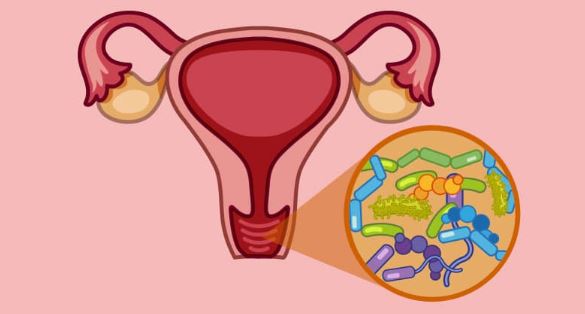Ayurvedic Management of Trichomonas Vaginalis Infection: A Case Report
DOI:
https://doi.org/10.21760/jaims.10.5.34Keywords:
Trichomoniasis, Strawberry spots, Yonivyapath, Sthanika Chikitsa, Shamana ChikitsaAbstract
Women are caretakers of health for their family; these roles can increase their risk for various infections and increase obstacles to appropriate and timely management. Vaginal infections are common problems for women for all ages. In that Trichomonas vaginalis is considered as one of the most common cause of symptomatic vaginitis in women. The classic symptoms associated with Trichomonas vaginalis include greenish-yellow frothy discharge, pruritis, dysuria, dyspareunia and strawberry cervix. Strawberry cervix is characterised by punctate haemorrhagic lesions. Although, it is uncommon sign, strongly indicates of Trichomoniasis. In Ayurveda classics, the cardinal symptoms of vaginal infections such as Yonisrava (abnormal vaginal discharge), Yonikandu (pruritis), Yonivedana (dyspareunia), Dourgandya (foul smell) etc. are mentioned under different Yonivyapath includes Slaishmiki, Paittiki, Upaplutha and Pariplutha etc. In the present case, a 45yrs old female patient came with complaints of foul smelling yellowish white discharge per vagina, itching and frequent micturition since 15 Days, on per speculum examination yellowish white discharge, cervical congestion and strawberry spots were present on the cervix and vagina. Both Sthanika and Shamana Chikitsa was adopted to manage this condition by using medicines with Kaphapittagna, Sravagna, Kandugna, Krimighna, Vruna Shodana and Ropana properties.
Downloads
References
Konar H. Infections of the individual pelvic organ. In: Dutta DC, editor. DC Dutta’s textbook of gynaecology. 7th ed. New Delhi: Jaypee Brothers Medical Publishers; 2016. p. 133–4.
Sood S, Kapil A. An update on Trichomonas vaginalis. Indian J Sex Transm Dis AIDS. 2008 Jan-Jun;29(1):7–14. Available from: https://journals.lww.com/ijst/fulltext/2008/29010/an_update_on_trichomonas_vaginalis.2.aspx
Thakur J, Kapil S. Ayurvedic management of Kaphaja Yonivyapada (Trichomonas vaginalis) – a case report. Int J Ayur Pharm Res. 2023 Apr;11(4). Available from: https://doi.org/10.47070/ijapr.v11i4.2765
Sood S, Kapil A. An update on Trichomonas vaginalis. Indian J Sex Transm Dis AIDS. 2008 Jan-Jun;29(1):7–14. Available from: https://journals.lww.com/ijst/fulltext/2008/29010/an_update_on_trichomonas_vaginalis.2.aspx
Kapoor Chand H. Yonivyapad: A comprehensive treatise on Striroga Gynaecology. 1st ed. Reprint 2020. Varanasi: Chaukhambha Vishvabharati; 2018. Ca.S.Chi.30/11–14, 21–24.
Kapoor Chand H. Yonivyapad: A comprehensive treatise on Striroga Gynaecology. 1st ed. Reprint 2020. Varanasi: Chaukhambha Vishvabharati; 2018. Ca.S.Chi.30/13–14.
Sharangadharacarya P. Sharangadara Samhita. Hindi commentary by Tripathi B. Varanasi: Chaukhamba Surbharati Prakashan; Madhyamakanda, 2/149. p. 155.
Rathod S, Khandare K, Shrivastava P. Efficacy of Panchavalkal Kwatha Dhavana followed by Panchavalkal Grutha application in case of Dusta Vrana. Int J Ayurveda Med. 2019 Jul-Aug;4(4).
Sharangadharacarya P. Sharangadara Samhita. Hindi commentary by Tripathi B. Varanasi: Chaukhamba Surbharati Prakashan; Madhyamakanda, 9/168–171. p. 242.
Shinde PS, Killedar RS, Laxmikant SD, Santhosh YM, Madiwalar M. Evaluation of wound healing activity of Jatyadi Ointment and Jatyadi Taila in the management of clean wound (Shuddha Vrana) – a randomised controlled trial. Int J Ayurveda Med. 2020 Apr-Jun;9(2).
Agnivesha. Caraka Samhita. Refined by Caraka and redacted by Drdhabala. English translation by Sharma PV. Vol. 2. Varanasi: Chaukhambha Orientalia; 2007. Chikitsa Sthana 30/13–14, 72. p. 503, 509.
Kumari P, Kumar V, Sharma P, Pathak A. Study the role of Pushyanuga Churna in the management of Pradar. WJPMR. 2019;5(9):100–2.
Kapoor Chand H. A comprehensive treatise on Striroga Gynaecology. 1st ed. Reprint 2020. Varanasi: Chaukhambha Vishvabharati; 2018. Sha.S.M 7/40–45, 48. p. 65.
Sahoo P, Mahanta NR. A critical analysis on a multipotent drug Chandraprabha Vati – review article. Int Res J Ayurveda Yoga. 2022 Jan;5(1):105–17. Available from: https://doi.org/10.47223/IRJAY.2022.5116















